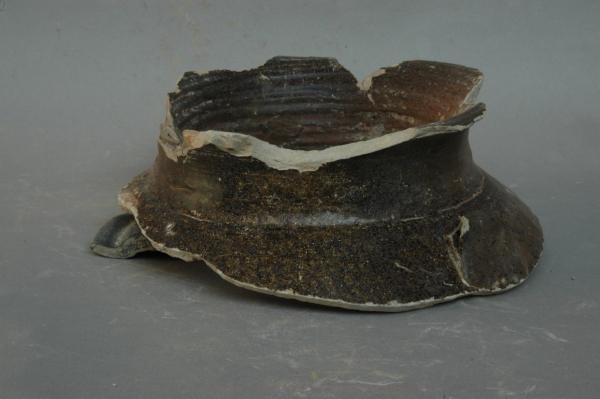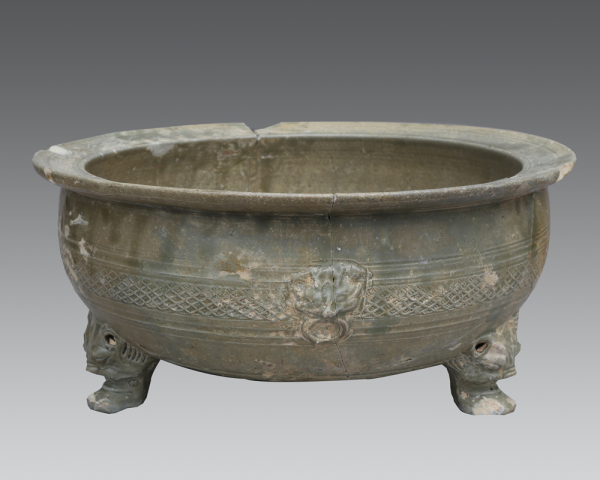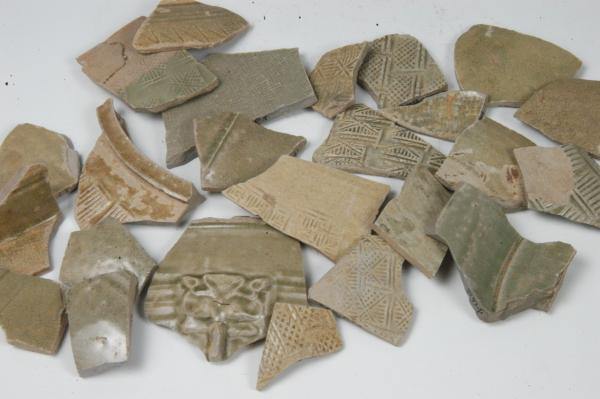Zhejiang is a cradle of ceramics, one of the greatest inventions of ancient China. According to some scholars, half of the history of Chinese ceramics was written in Zhejiang. Ceramic manufacturing in the coastal province in eastern China started in the Xia (c. 2070-c. 1600BC) and the Shang (c. 1600-c. 1046), two earliest dynasties in China, and lasted up to the Qing (1644-1911).
Archaeological finds in Zhejiang indicate that kilns in the centuries prior to the Qin (221-207BC), early Yue kilns in the Han (202BC-220AD) and the Six Dynasties (222-589), the Yue kilns in the Tang (681-907) and the Song (960-1279), the Official Kilns of the Southern Song (1127-1279), and Longquan Kilns that operated from the Song, Yuan (1279-1368) and Ming (1368-1644), combined to be the mainstream celadon manufacturing not only in the province but also in China. These kilns in more than 2,000 years evolved and advanced step by step and their influences spread far and wide not only to the four corners of the country but also to the rest of the world. Celadon manufacturing techniques from Zhejiang were extensively copied in Asia and North Africa.

The genesis of ceramics took place slowly over a period of a long time. Temporally speaking, the proto-porcelain came into being and then became better and better in the centuries prior to the Qin. In the centuries that covered the Han and the Six Dynasties, celadon took shape and the technique became mature. The genesis of proto-porcelain and the appearance of celadon, which are two landmark technological transformations in the history of ceramics, took place in Zhejiang. The two epoch-making technologies marked Zhejiang as the center of the country and the world for porcelain making.
The kilns in Zhejiang that date back to the centuries before the Qin were largely located in Deqing, a rural county in the north of the province. The kilns in this region were the earliest ones in the period and operated for the longest time. Moreover, the kilns were tightly organized in the region and constituted a large-scale production and very good quality unseen anywhere in the country. The kilns, unique in China in terms of quantity, quality, design, technology, management, manifest the first complete chapter in the history of porcelain making of China. And they laid a solid foundation for the appearance of mature celadon in the Han Dynasty.

Celadon manufacturing appeared and flourished at kilns along the Cao’e River in present-day Shangyu, which is now a district of Shaoxing in eastern Zhejiang. In this region, dozens of kiln sites have been unearthed. Some kilns were exclusively engaged in producing stoneware and proto-porcelain, some manufactured a mix of stoneware, proto-porcelain and celadon, and some were dedicated to celadon production. A close look at these kilns reveals that celadon production improved and gradually yielded top-quality products whereas stoneware and proto-porcelain production gradually phased out.
From the late period of the Eastern Han to the Three Kingdoms and Western Jin, celadon manufacturing boomed. The kilns turned out a great variety of finely designed products. Modern tests indicate that the celadon products made during these centuries were even better than those made in the Tang and the Song in terms of firing temperatures and water absorption. Such top-quality celadon objects we see today are from tombs of the high-class people around Nanjing, the capital city of many dynasties during this period. It can be reasoned that the kilns along the Cao’e River in eastern Zhejiang during the Six Dynasties period featured the best celadon-making technology and largest industrial scope in China.

The national porcelain making industry before the Tang Dynasty (618-907) was essentially centered in Zhejiang. In other words, the history of porcelain making in Zhejiang during that time explains the porcelain making in both China and the world. In the dynasties of the Sui (581-618) and the Tang, white porcelain appeared in the north whereas the celadon production remained strong in the south. From centuries of the Tang to the Song, the Yue kilns in Zhejiang were technologically the most advanced.
So called Yue kilns were represented by the kilns around Shanglin Lake in present-day Cixi, a city in eastern Zhejiang. The core of the porcelain making industry flourished in the lake zone from the late period of the Tang to the early part of the Northern Song. In the early period of the Southern Song, kilns around the lake still manufactured fine ceramics for the royal court. The kilns were a major supplier of porcelain pieces for the use of the court for the Tang and the Song dynasties. The “secret-color porcelain” represented the best of the thin glaze celadon. The secret-color porcelain was a breakthrough in porcelain making and stands for the top-class celadon from the Tang on.

The kilns in Longquan in southern Zhejiang combined to be the best celadon production system. Longquan kilns were largely scattered along the Oujiang River in the south of Zhejiang Province. The core region of this phenomenal celadon production system was in Longquan, now a city on the upper stream of the Oujiang River. There are nearly 400 kiln sites in Longquan. The thick-glaze celadon in the color of pale green and plum green invented in Longquan is the distinct feature of the celadons produced in Longquan.
In terms of technology and production scale, Zhejiang was the leader of China’s porcelain manufacturing industry before the Ming Dynasty.
Export to Overseas Countries
Zhejiang began exporting porcelain products to the other parts of China in the centuries prior to the Qin. Most proto-porcelain pieces unearthed in archaeological sites in the north of China came from the kilns of Zhejiang. During the Six Dynasties, all the porcelain pieces China exported to Korean Peninsula were from the Yue kilns of Zhejiang. During the Eastern Jin and the Southern Dynasties, kilns at Deqing contributed a share of exportation, adding black-glazed porcelains to the celadon export. This was the first high peak of celadon export of Zhejiang.
Celadon export from Zhejiang first peaked from the 9th century to the 11th century. The celadon goods were exported to Korean and Japan as well as southeast, south and west of Asia, and north and east of Africa, as testified by archaeological finds at the port cities in these parts of the world. Celadon from Zhejiang accounted a major part of China’s international porcelain trade during that time.
As China provided the international market with more and more celadon, celadon production no longer stayed in Longquan. There were many celadon kilns operating in neighboring regions such as Lishui, Jinhua, Quzhou and Wenzhou in the province. There were celadon kilns operating in Fujian, Jiangxi, Guangdong, Guangxi and even Guizhou. All these celadon kilns formed an extensive Longquan celadon manufacturing system, unseen in history.
